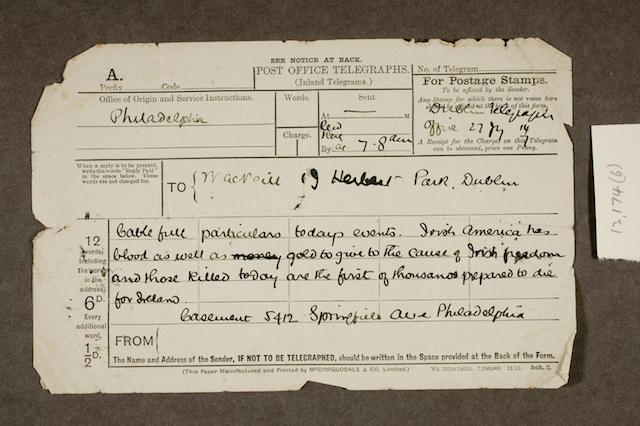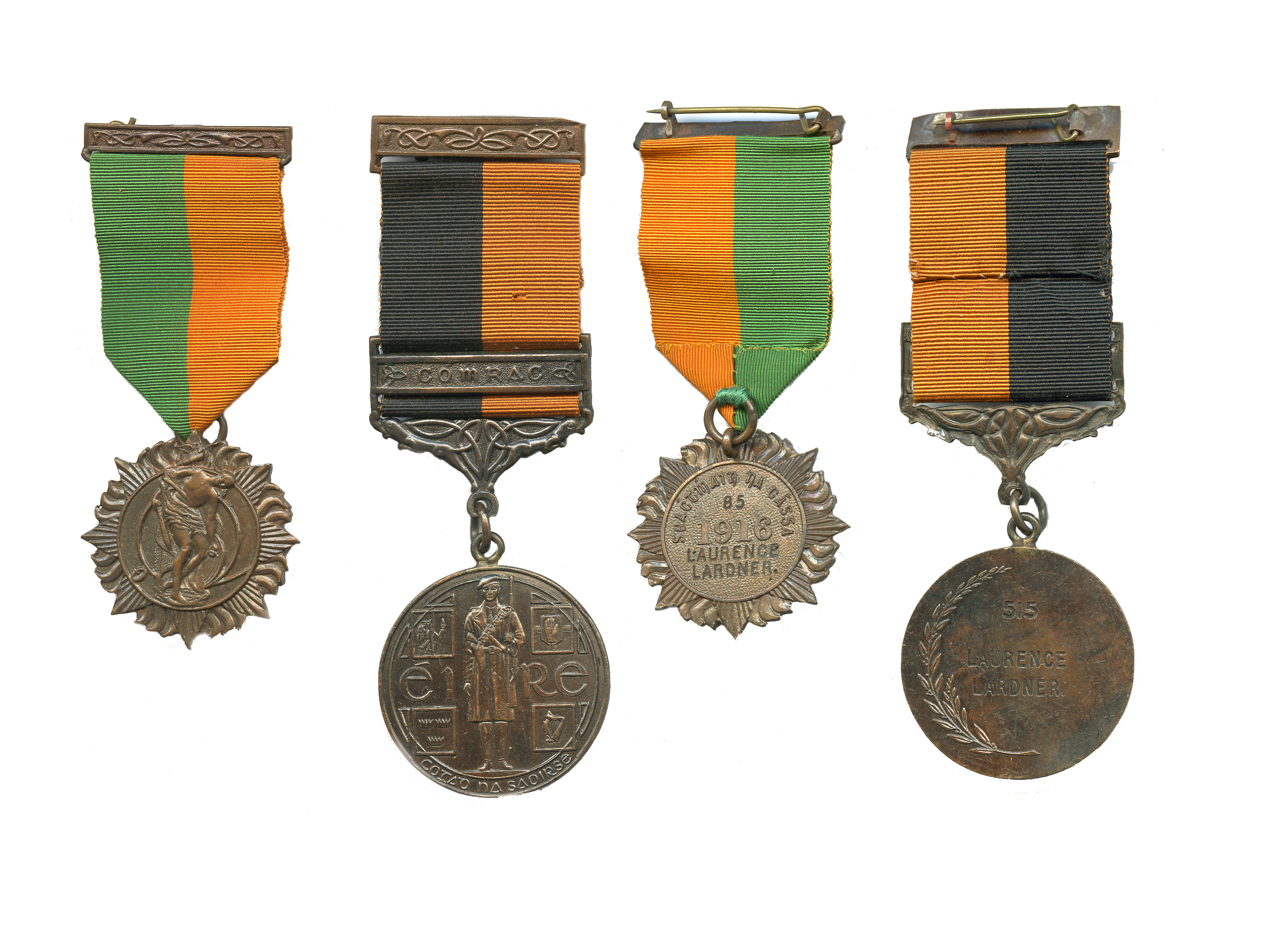The Irish War of Independence in 5 Objects
As the Trinity College Dublin Course ‘Irish Lives in War and Revolution’ begins and ahead of the centenary of the Easter Rising, when Irish republicans rose up to try to end British rule in Ireland, we look at what five objects can tell us about Ireland’s past.
Violence imbues objects with a gravitas that transforms them from a thing, a piece of stuff, into something more significant. In times of war vast numbers of everyday objects escape mundanity, becoming weapons and symbols and later evidence, for it’s these objects that offer us glimpses of the past. Here are five that can help us explore Ireland’s history.
1. The telegram

Telegrams were a quick and effective way to communicate important strategy and announcements during wars. During the Great War thousands of Irish families dreaded the arrival of a telegram to say their loved one had been killed, wounded or taken prisoner.
In the Irish War of Independence telegrams were vital to the crown forces, keeping remote police stations and army barracks in contact with each other. In fact telegrams were so important that the Irish General Post Office in Dublin was the main building seized by republicans who severed telegraph lines, believing that the GPO, as a key centre of communication between Ireland and England, was representative of British control.
2. The uniform

Uniforms during the Irish War of Independence weren’t exactly uniform. On the republican side, volunteers generally wore civilian clothes with a marker like a military belt or hat. It was the concept of a uniform that was more important – it gave people a sense of legitimacy and unity.
On the British side one uniform became especially notorious – the war itself is sometimes called the ‘Tan War’ or the ‘Black and Tan War’ after the uniforms of a specific unit of the British forces known for their indiscriminate violence towards civilians.
As they so often do, uniforms transcended their wearers, becoming potent symbols of ideology and belief.
3. The razor

Violence against women during war is common and the Irish War of Independence was no different. Irish women accused of fraternising with British soldiers had their heads shaved, through being shorn women were not only shamed, they were marked – serving as a warning to others. This intensely personal assault could be seen as an attempt at removing a woman’s femininity.
4. Medals

After the war was over, many different medals served as reminders of the sacrifice and bravery on both sides. From the Black and Tan medal to the medal commemorating the eventual truce between Britain and Ireland, each metal disc served as an acknowledgement to individuals of the price they had paid.
5. The Irish flag
.jpg)
Although the Irish flag had existed since the 19th century only during the Irish War, after it was hoisted above the General Post Office by republicans during the Easter Rising, did it really come into widespread use. It’s interesting to note that themes of unity and inclusion (and the tensions they bring) have always been present in the Irish flag: the green of the Irish tricolour represents Gaelic Catholic identity, the orange is for Protestant Williamite identity (after William III of the House of Orange) and the white between them represents peace.
Even now official documents relating to the flag state:
‘the Irish Tricolour is intended to symbolise the inclusion and hoped-for union of the people of different traditions on this island, which is now expressed in the Constitution as the entitlement of every person born in the island of Ireland to be part of the Irish nation (regardless of ethnic origin, religion or political conviction).’
If you enjoyed this post and you want to learn more about the Irish War of Independence, join the course ‘Irish Lives in War and Revolution’ by Trinity College Dublin.




